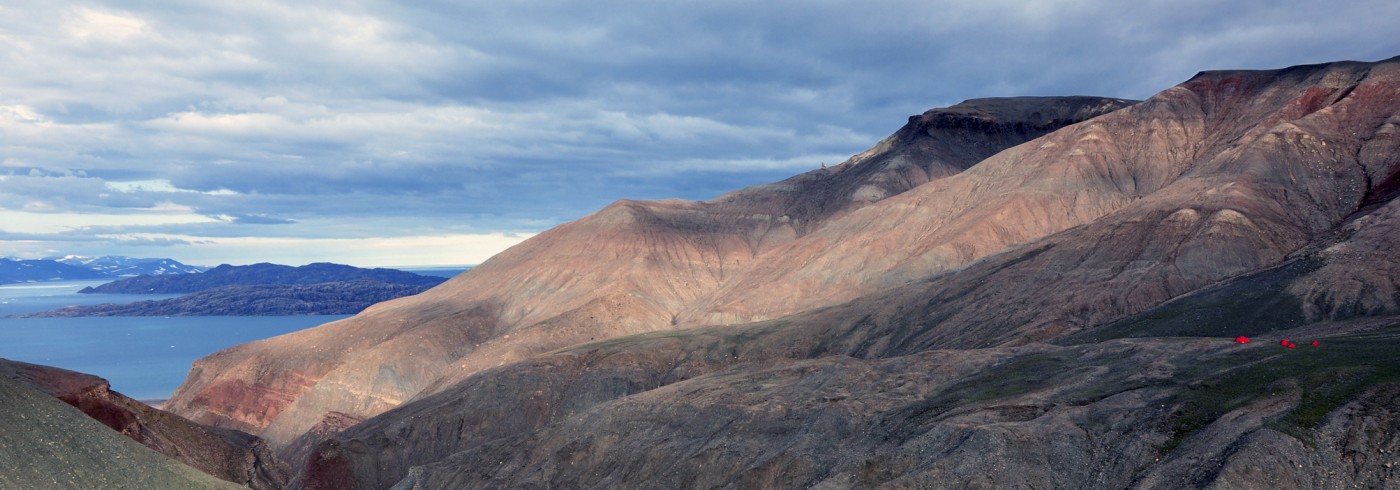The sun was out as we set off for our collecting trip. We packed wrapping paper, sample bags and small chisels for our assault on the concretions. We were not to be disappointed. The first few hours on the slope yielded well over 100 specimens of Ophiceras, the most abundant ammonite known from the Wordie Creek Formation. Many of these were also exceptionally preserved, showing the taxonomically important sutures between the internal shell chambers. Ammonites, like the modern day Nautilus, used differing fluid densities within their shell chambers to control buoyancy. The configuration of the walls between these chambers, as well as the exterior ornamentation and shape of the shell, are critical for identifying different species.
We found prolific specimens of the bivalve Claraia and some more fishes including Bobastrania, Boreosomus, and a similar species Australosomus.
Most significant, however, was the recovery of numerous large coprolites.
Coprolites are fossilized droppings, and are actually quite characteristic in terms of “who did it”.
Curiously, one of the “coprolite” masses had very little phosphatic matrix, and showed a conspicuous longitudinal alignment of its constituent fish bones. Under the hand lens these revealed minimal corrosion by gut acid, meaning that we might have a fossilized regurgitate – a vomited accumulation of indigestible fish fin spines that were coughed up some 250 million years ago!

